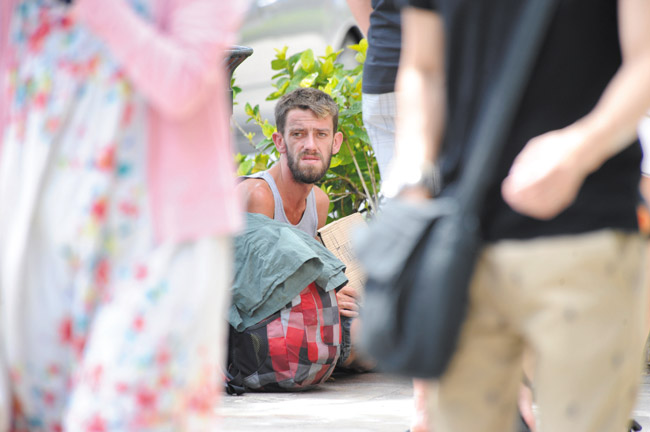Gimme Shelter — Or Better, A Home
On the night of Jan. 25, 2015, approximately 3,000 homeless slept in Oahu shelters.
A count taken over the next five nights found 2,000 more sleeping, well … darned near everywhere: in parks, under highway overpasses, on beaches from Waikiki to Waianae. Name a spot free of city restrictions and eventually, homeless folks will find it, pitch their tents and make a temporary home.
The numbers in the annual point-in-time survey of Oahu’s homeless have inched up year-by-year, from 3,638 in 2009 to 4,903 in 2015. What’s worse, 40 percent of the homeless in the 2015 count were not sheltered, the highest percentage in the last seven counts.
Estimates of the Hawaii homeless statewide have varied from 6,000 to 12,500 over the last half-dozen years. Not surprisingly, per capita homelessness in Hawaii rivals that of Florida, Georgia, Texas and California — warm weather states all. Homelessness in Hawaii is particularly jarring. We celebrate aloha and ohana as our core values, but far too many local families depend on homeless shelters, the battered family van or a tent.
We advertise ourselves as a paradise, but visiting honeymooners emerge from their $250-per-night hotel and put down their mats to find themselves sunning beside a sleeping homeless man.
How has this come to pass? Many are the ways.
The late Daniel Patrick Moynihan, a Ph.D. in sociology and three-term U.S. senator, blames a generation of well-meaning liberals like himself and his hero, President John F.
Kennedy. JFK signed the “Mental Retardation Facilities and Community Mental Health Centers Construction Act of 1963.”
It would clean out the asylums that had warehoused the mentally ill and impaired in the 19th century. With new wonder drugs and support from 2,000 community centers to be built across the country, the mentally ill would be enabled to make a life.
But only 482 of the promised 2,000 community centers were built by 1980, and in that year President Ronald Reagan announced that “Government is not the solution to our problem; government is the problem.”
So the mentally ill, vials of prescription drugs clutched in their hands, went free into the world. There, in Moynihan’s words, “They might sleep in doorways as often as they chose. The problem of the homeless appeared, characteristically defined as persons who lacked ‘affordable housing.'”
Three decades after passage of the mental health reform legislation, Sen. Moynihan would describe it as “absolutely catastrophic, a tribute to ignorance and all that is wrong, and it would never have happened if we hadn’t set out to improve things.”
Few scholars joined Moynihan in blaming the nation’s homeless epidemic on one federal law. According to one recent study, the mentally ill constitute 15 percent of the homeless, but 30-40 percent of those identified as “chronically homeless.”
That category is the most difficult with which to deal. In his State of the City address, Mayor Kirk Caldwell described his administration’s strategy: “We are embracing the Housing First model … find chronic homeless individuals, put them into a house, an apartment, first. Then we say get better. Deal with why you are on drugs, drug addiction, alcohol addiction and mental illness. We’ll provide that support. Help you get better. Then you can get back on your feet.
“It works. We made a commitment to house 400 folks in the next couple of years … 115 by the end of this year. We’re at 31 homeless individuals as of today.”
Good, but according to last week’s numbers, there’s a long way to go.
dbboylan70@gmail.com






